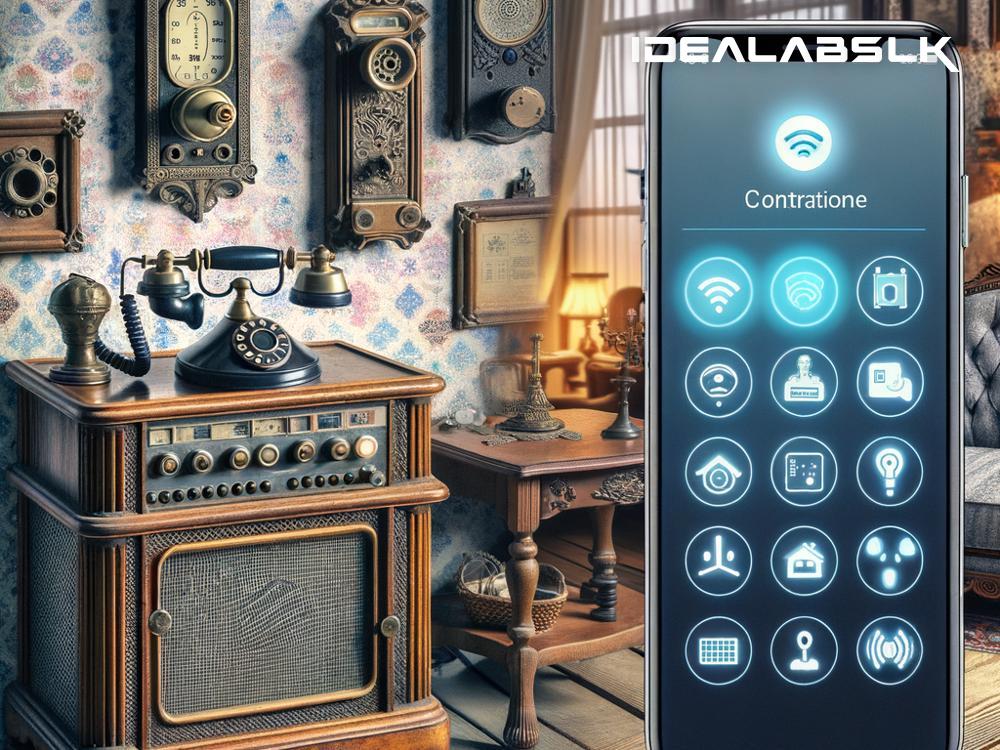The Magic of Home Automation: A Simplified Journey Through Time
Home automation might seem like a modern marvel, but its roots stretch far back into history, much further than the sleek, app-controlled gadgets we're familiar with today. Let's hop into a time machine and explore the fascinating evolution of home automation, from simple innovations to the high-tech wonders that make our lives easier today.
The Early Days: Back to the Basics
Believe it or not, the concept of automating home tasks is not a product of the digital age. The journey began in the late 1800s, an era marked by curiosity and industrial strides. In these times, inventors applied mechanical ingenuity to make daily chores a bit less burdensome. For instance, the creation of the washing machine in the late 19th century was a primitive form of home automation. This kind of innovation laid the groundwork for automating domestic chores, showing that people have always looked for ways to make life at home more convenient.
The 20th Century: Rise of the Machines
As we stepped into the 20th century, electricity became the heartbeat of innovation, opening doors to countless possibilities for home automation. The development of home appliances like refrigerators, vacuum cleaners, and later, television sets, began to reshape domestic life. These devices, initially luxuries, became common household items, automating tasks and providing entertainment and convenience at an unprecedented scale.
The first real taste of interconnected home automation came in 1966 with the "Echo IV," a kind of primitive computer designed to control the home's devices, though it never went on sale to the public. Then, in 1975, a game-changer arrived - the X10. This home automation system used standard electrical wiring and radio frequency to allow homeowners to control lighting, appliances, and more. It was our first glimpse at a truly "smart" home, setting the stage for what was to come.
The Digital Revolution: A New Era of Smart Homes
The late 20th and early 21st centuries marked the age of the internet and digital technology, catapulting home automation into a new realm. Broadband internet became the norm, and the introduction of Wi-Fi in homes set the stage for modern home automation. The digital age brought us the concept of the "Internet of Things" (IoT), referring to the interconnectedness of home devices through the internet.
This era ushered in smart home devices and systems controlled via smartphones and voice commands. Innovations like the smart thermostat, which learns your schedule and preferences to optimize your home's heating and cooling, and smart security systems that allow you to monitor your home from anywhere, have transformed our living spaces into hyper-connected, more efficient environments.
Today and Tomorrow: The Future is Now
Today, home automation is more accessible and versatile than ever. Voice assistants like Amazon's Alexa, Google Assistant, and Apple's Siri can control an array of devices with simple voice commands. Meanwhile, apps on our smartphones can manage everything from our lights to our lawn sprinklers, all from halfway around the world.
But what does the future hold? Predictions suggest that AI and machine learning will make smart homes even more intuitive, learning from our habits to automate tasks without our input, making life even more convenient. Imagine your home knowing you're about to arrive and preparing itself by adjusting the temperature, lighting, and maybe even starting the bath.
In Conclusion
The history of home automation is a testament to humanity's relentless pursuit of convenience, efficiency, and innovation. From the mechanical innovations of the 19th century to the digital and AI-driven devices of today, the evolution of home automation is a fascinating journey. As we look to the future, it's clear that this journey is far from over. The possibilities are endless, and one can only imagine how future generations will automate their homes. The story of home automation continues to unfold, promising a future where our homes not only shelter and comfort us but anticipate and cater to our every need in ways we can only begin to imagine.

